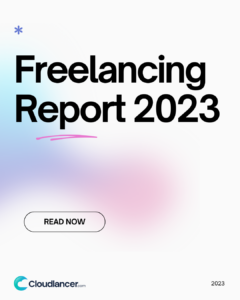Table of Contents
Digital Nomad Statistics 2023: Statistics, Trends, Demographics, & More
Table of Contents
In an era defined by technological advancements and the pursuit of a flexible work-life balance, the concept of being a digital nomad has gained significant traction. Breaking free from the traditional confines of a nine-to-five office job, individuals are now embracing a location-independent lifestyle that allows them to work remotely while exploring the world. The rise of digital nomadism has not only revolutionized the way people perceive work, but has also presented unique opportunities and challenges for both individuals and the global economy.
In this report, we take a deeper look at the digital nomad movement through a comprehensive analysis of relevant statistics. By delving into the latest research and surveys conducted within the community, we will uncover key insights into the global distribution of digital nomads, the most popular destinations, the industries they represent, and the economic impact they generate.
Key Digital Nomad Statistics
- By the second half of 2022, an estimated 16.9 million Americans identified as digital nomads
- 46% of digital nomads are millennials
- 59% of digital nomads are college-educated
- The number of digital nomads has increased by 131% since the Covid-19 pandemic
- 43 countries currently offer digital nomad visas
- Albania is the most affordable country for digital nomads to live in
- 36% of digital nomads earn between $100,000 and $250,000 per year
- 81% of nomads are “highly satisfied” with their lifestyle
General Digital Nomad Statistics
✅ By the second half of 2022, an estimated 16.9 million Americans identified as digital nomads.
✅ Globally, 64% of freelancers have opted for the nomadic lifestyle, in order to pursue their dreams of traveling the world.
✅ 36% of professionals would choose the ability to travel while working remotely over a pay raise.
✅ Digital nomads and remote workers are reportedly 35-40% more productive.
✅ 51% of digital nomads are homeowners.
More than half of those living and traveling abroad are homeowners, either in their home country or in one of their preferred travel destinations.
Digital Nomad Demographics
✅ 46% of digital nomads are millennials.
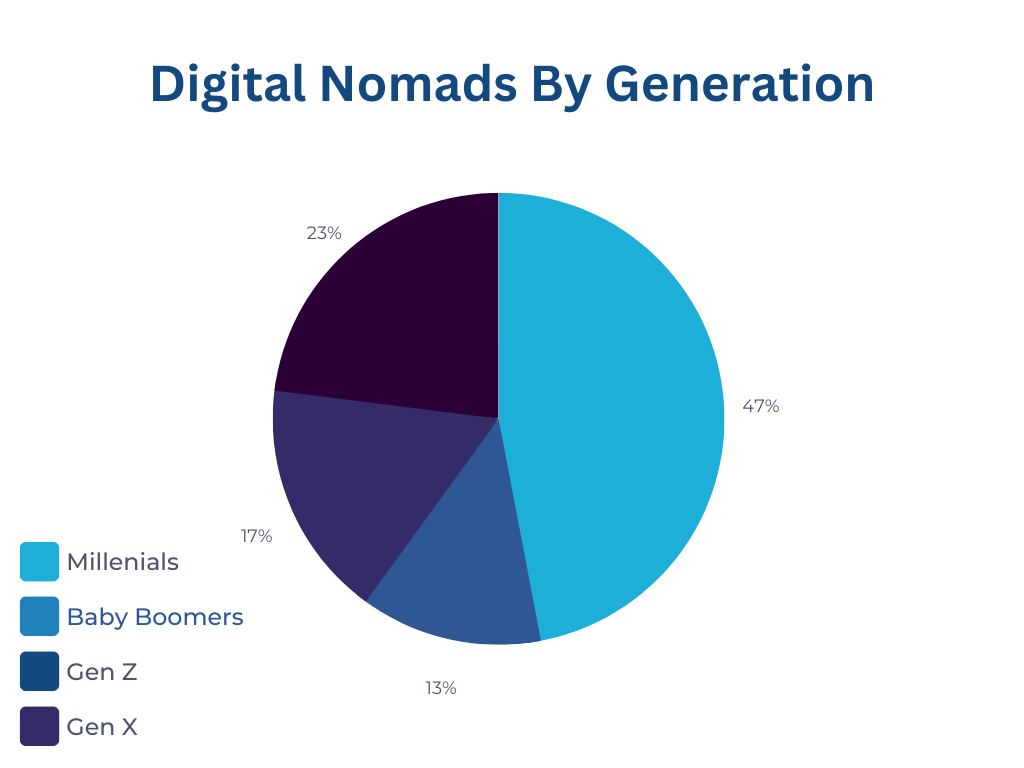
✅ More than half of digital nomads are married.
✅ 76% of nomads are White.
✅ 59% of digital nomads are college-educated.
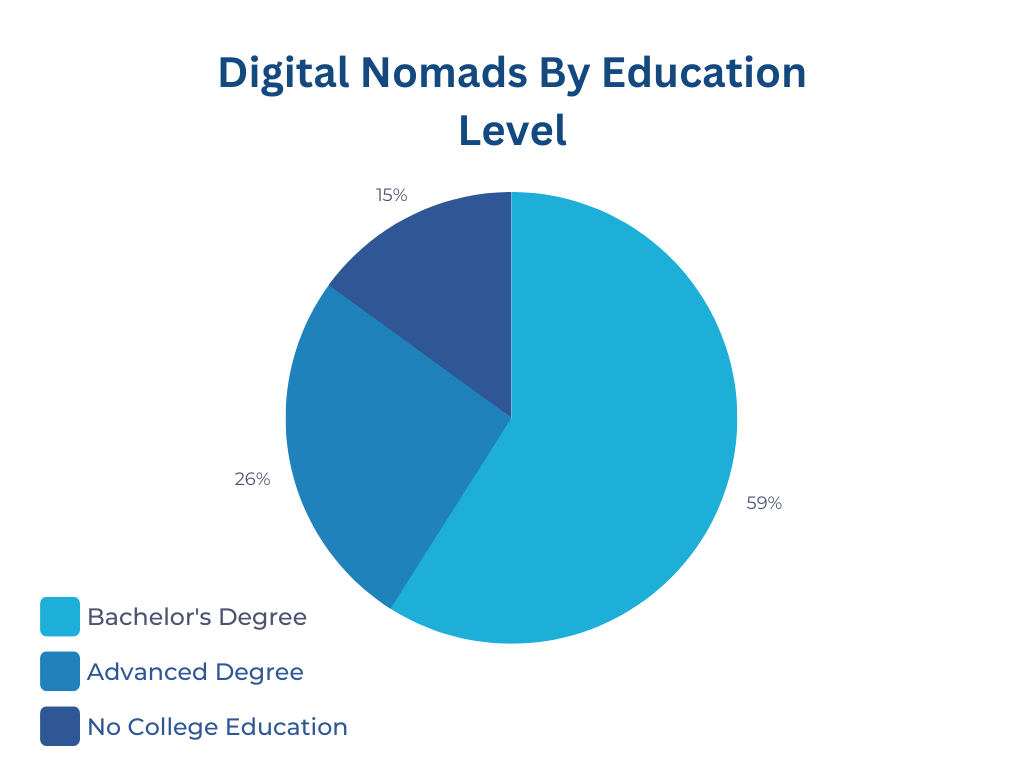
✅ More than half of nomads identify as men.
Covid-19 & The Digital Nomad Movement
✅ The number of digital nomads has increased by 131% since the Covid-19 pandemic.
✅ The number of independent workers who identify as digital nomads has also increased since 2019.
✅ In 2022, 66% of digital nomads were employed full-time.
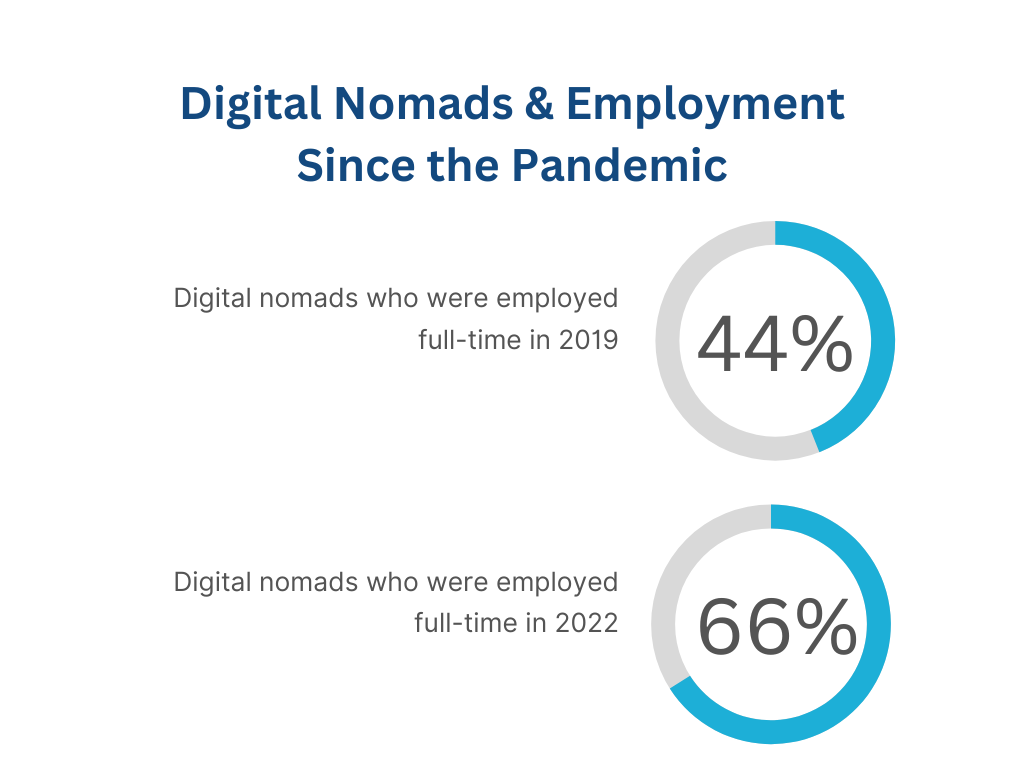
Digital Nomad Destinations & Nationalities
✅ The majority of nomads are US citizens.

✅ Only 7% of digital nomads are from the United Kingdom.
✅ 43 countries currently offer digital nomad visas.
Many countries have taken advantage of the increasing prevalence of remote work by offering visas specifically for remote workers looking to live abroad while working online. As of 2023, 43 countries are offering these types of visas, such as Portugal and Estonia.3
✅ Albania is the most affordable country for digital nomads to live in.
✅ Mexico is the most popular destination for digital nomads.

✅ Barbados is the least popular country among digital nomads.
✅ Nomads spend an average of 8 months in each country.
Digital Nomad Career & Income Statistics
✅ 36% of digital nomads earn between $100,000 and $250,000 per year.

✅ 45% of nomads earn more than $75,000 per year.
✅ There is a digital nomad gender pay gap.
✅ The average yearly income for digital nomads is $123,565.
Digital Nomad Lifestyle
✅ 81% of nomads are “highly satisfied” with their lifestyle.
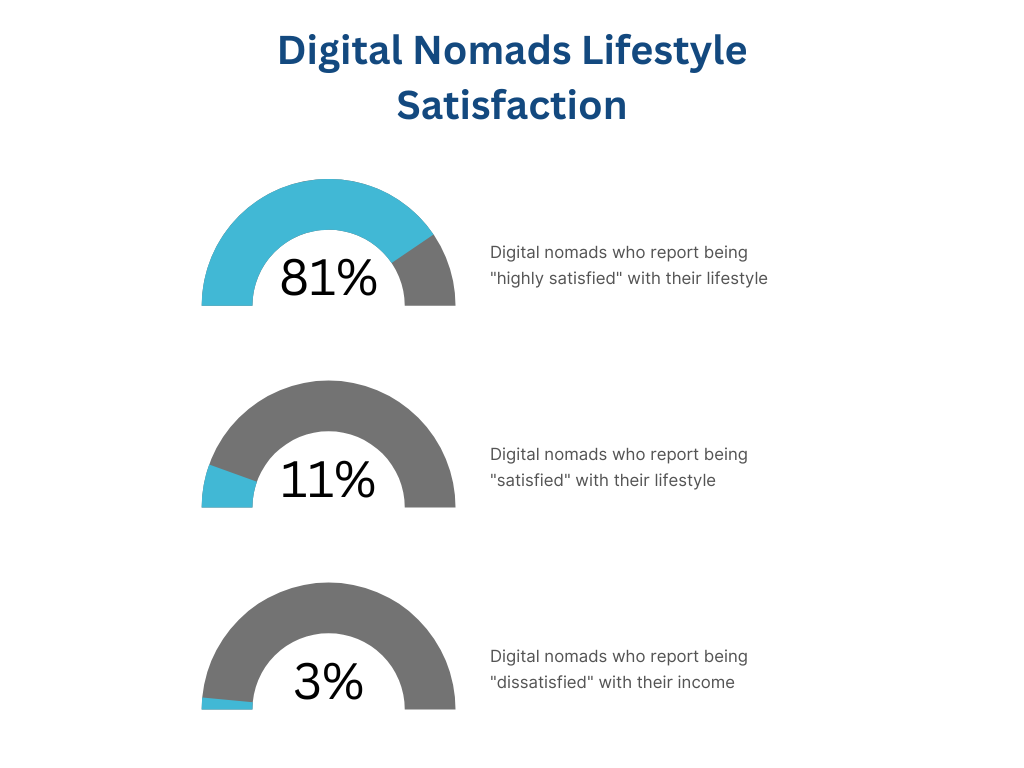
✅ ‘Van Lifers’ have surged in popularity.
✅ Veteran digital nomads are more likely to stay that way.
Digital Nomad Challenges
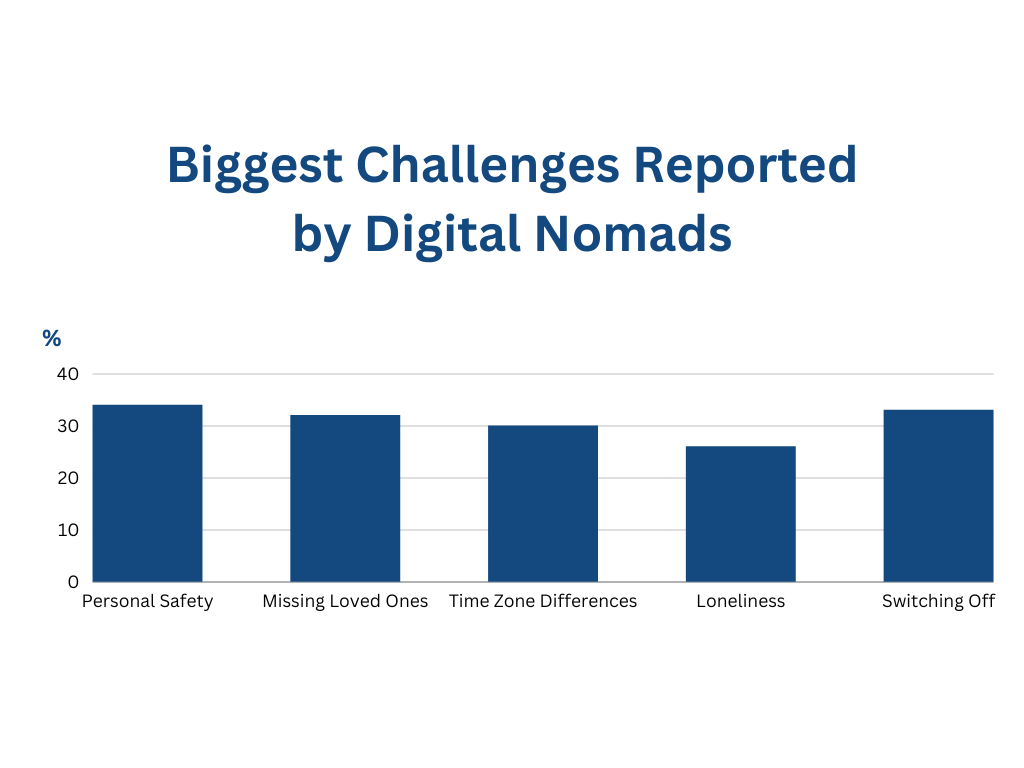
✅ 34% of digital nomads are worried about their personal safety.
✅ 32% of digital nomads struggle being away from their loved ones.
✅ 30% of nomads struggle with time zone differences.
Nearly a third of nomads reported that differing time zones between themselves and their clients or colleagues made work difficult.6
✅ 26% of digital nomads report being lonely.
✅ 33% of digital nomads struggle to switch off after a work day.
Digital Nomads & Technology
✅ Digital nomads use technology to stay competitive.
✅ Digital nomads are more likely to be early adopters of technology.
✅ 44% of nomads say that instant communication tools are “vital”.
✅ More tools are needed, according to 47% of digital nomads.
Nearly half of nomads think that there is room for more tools and software to be developed to help them manage their workflows.9
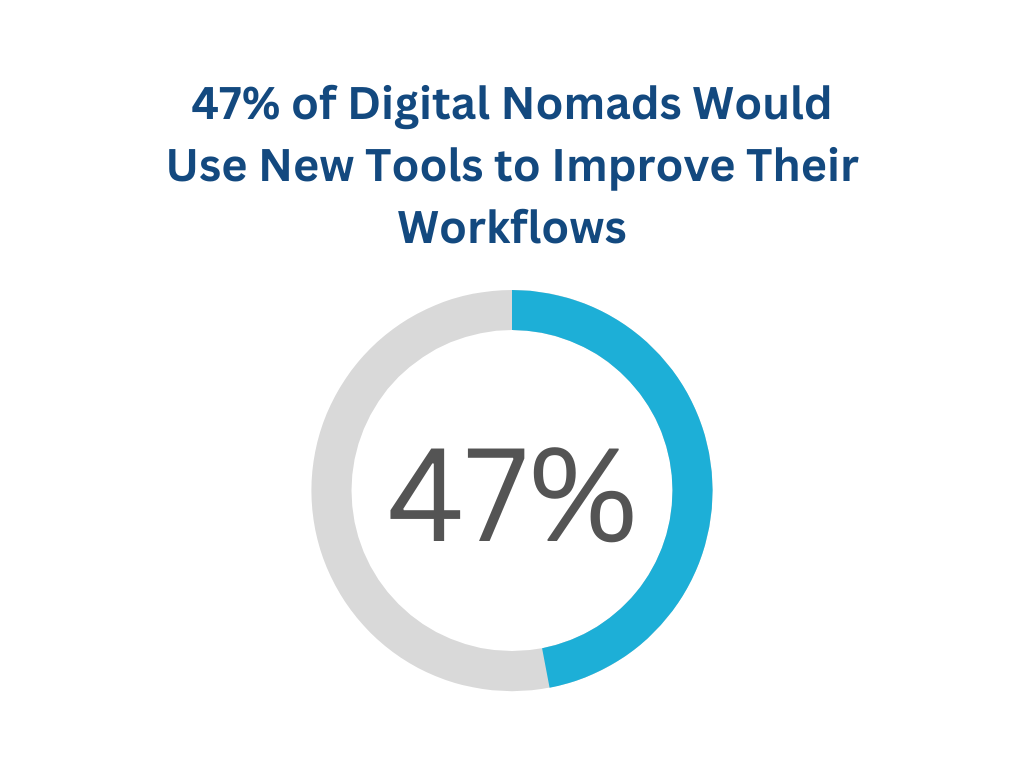
Digital Nomad Careers
✅ The majority of digital nomads work in the information sector.
✅ 12% of nomads work in a creative field.
✅ 43% of nomads are freelance.
Sources:
- Number of digital nomads in the U.S. 2022 | Statista
- Freelancer Survey 2023 – Market Insights, Data & Trends
- Countries granting digital nomad visas by region 2022 | Statista
- The 6 Cheapest Countries to Live in as a Freelancer
- Digital nomad income worldwide 2023 | Statista
- MBO Partners Digital Nomads Report
- Digital nomads by gender worldwide 2023 | Statista
- Top digital nomad nationalities worldwide 2023 | Statista
- Remote Work & Digital Nomads Study 2018 – The Anywhere Workers
- The Best & Worst Places for Expats in 2022 | InterNations
- Costs and Benefits – Global Workplace Analytics – Agile Work, and More
- 2023 State of Digital Nomads


